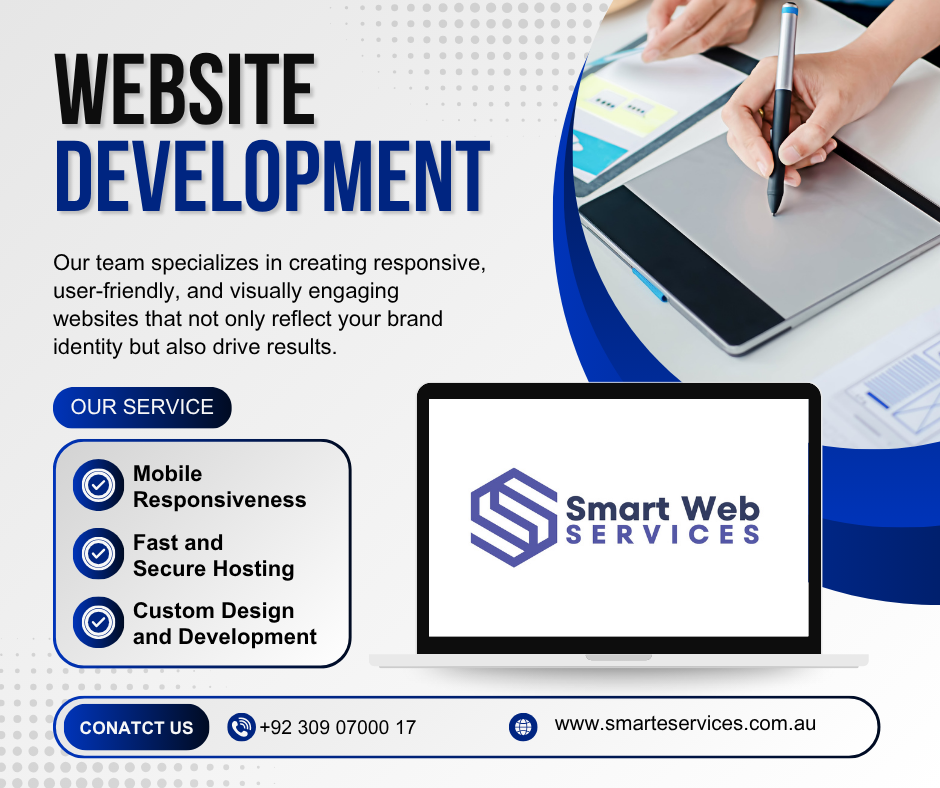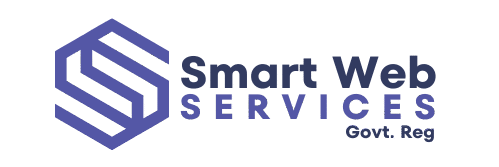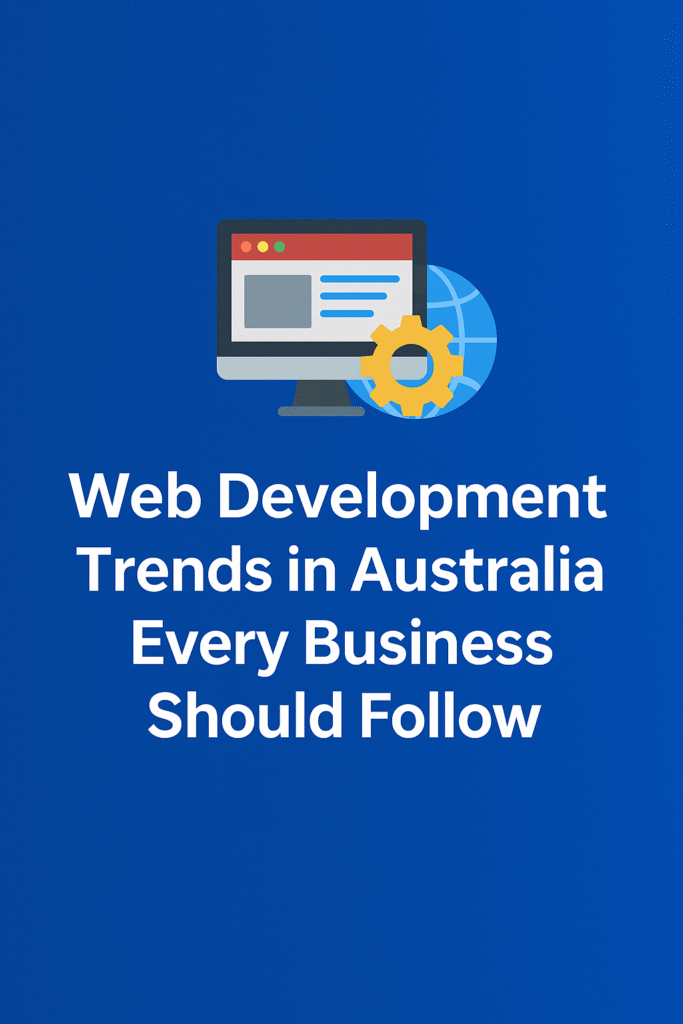In today’s digital-first world, having a website is no longer enough for businesses in Australia. Customers expect fast-loading, mobile-friendly, and secure websites that not only showcase a brand but also provide a seamless user experience. From e-commerce stores to professional service providers, businesses are realizing that staying ahead in web development trends directly impacts growth, customer trust, and revenue.
Here are the top web development trends in Australia every business should follow to remain competitive in 2025 and beyond.
1. Mobile-First Design is Essential
Australia has one of the highest mobile internet usage rates in the world, with over 80% of web traffic coming from smartphones. This makes mobile-first design no longer optional but essential.
A mobile-first approach ensures your website looks perfect on smaller screens, loads quickly, and provides intuitive navigation. Businesses that ignore this risk losing customers before they even browse their products or services.
👉 Tip for businesses: Always test your website on multiple mobile devices before launch and prioritize speed and simplicity over heavy visuals.
2. SEO-First Web Development
SEO is not just about keywords anymore. Search engines like Google reward websites that are built with SEO in mind. That means clean code, structured URLs, schema markup, and optimized page speed.
For Australian businesses, local SEO is particularly important. Whether you’re a café in Sydney or an IT service provider in Melbourne, your website should be optimized for location-based searches.
👉 Tip for businesses: Work with developers who understand both SEO and web design. A website that looks good but can’t be found on Google is a wasted investment.
3. Cloud-Based Web Applications
As more companies embrace remote work and scalable solutions, cloud-based application development is becoming the norm in Australia. Cloud platforms allow businesses to host apps, scale resources during peak demand, and integrate with third-party services seamlessly.
E-commerce platforms, online booking systems, and SaaS solutions all benefit from cloud integration. This ensures high availability, faster performance, and cost efficiency.
👉 Tip for businesses: Choose cloud hosting with Australian data centers to ensure low latency and compliance with local data regulations.
4. Custom Software Development for Unique Needs
Off-the-shelf solutions don’t always meet the unique requirements of Australian businesses. That’s why many are turning to custom software development.
Custom websites and applications allow companies to build tailored solutions that integrate with existing workflows, payment gateways, or industry-specific compliance standards. This flexibility not only enhances efficiency but also provides a competitive edge.
👉 Tip for businesses: Consider a custom web solution if you need advanced features like multi-vendor e-commerce, secure client portals, or industry-specific tools.

5. Performance and Speed Optimization
No one likes waiting for a slow website. Studies show that if a page takes more than 3 seconds to load, visitors often abandon it.
For Australian businesses, performance optimization means:
- Compressing images
- Using lightweight code
- Leveraging Content Delivery Networks (CDNs)
- Hosting on servers close to local users
Fast websites don’t just improve user experience; they also boost Google rankings.
👉 Tip for businesses: Ask your developer to optimize for Core Web Vitals — metrics Google uses to measure speed, interactivity, and stability.

6. Security and Data Protection
With rising cyber threats, website security has become a top priority in Australia. From e-commerce sites to government portals, businesses need to secure customer data and transactions.
Key measures include:
- SSL certificates
- Two-factor authentication
- Regular security audits
- Compliance with Australia’s privacy laws
👉 Tip for businesses: Make cybersecurity part of your web development plan from the start instead of treating it as an afterthought.
7. AI and Personalization
Artificial Intelligence (AI) is reshaping how businesses interact with customers online. From AI chatbots handling inquiries to personalized recommendations on e-commerce websites, AI enhances both efficiency and customer satisfaction.
In Australia, companies are starting to integrate AI tools that analyze user behavior and deliver tailored experiences. This not only improves conversions but also builds stronger customer loyalty.
👉 Tip for businesses: Start small by adding AI-driven chatbots or product recommendations and expand as your customer base grows.
8. E-Commerce Optimization
The Australian e-commerce market continues to grow rapidly. Businesses that sell online must focus on frictionless shopping experiences.
This includes:
- Mobile-optimized product pages
- Secure payment gateways
- One-click checkout options
- Transparent shipping and return policies
Customers are more likely to complete a purchase if the process feels smooth and trustworthy.
👉 Tip for businesses: A/B test your checkout process regularly to identify what reduces cart abandonment.
9. Accessibility and Inclusive Design
Accessibility is no longer optional. Websites should be designed to accommodate all users, including those with disabilities.
This involves:
- Adding alt text to images
- Ensuring keyboard navigation
- Using readable fonts and high-contrast colors
- Following WCAG (Web Content Accessibility Guidelines)
👉 Tip for businesses: Not only does accessibility make your website more inclusive, but it also expands your potential customer base.
10. Continuous Support and Maintenance
Web development doesn’t end when the site goes live. Regular updates, backups, and content improvements are necessary to stay competitive.
Australian businesses that invest in ongoing website support avoid downtime, improve security, and continuously refine their SEO performance.
👉 Tip for businesses: Establish a long-term maintenance plan with your developer to keep your website healthy and secure.
Final Thoughts
The digital landscape in Australia is evolving rapidly, and businesses must adapt to stay ahead. By following these web development trends — mobile-first design, SEO-focused builds, cloud integration, security, AI, and accessibility — companies can create websites that are not only visually appealing but also growth-driven.
In a competitive market, your website is often your first impression. Make sure it reflects your brand’s quality, professionalism, and customer-first approach.



